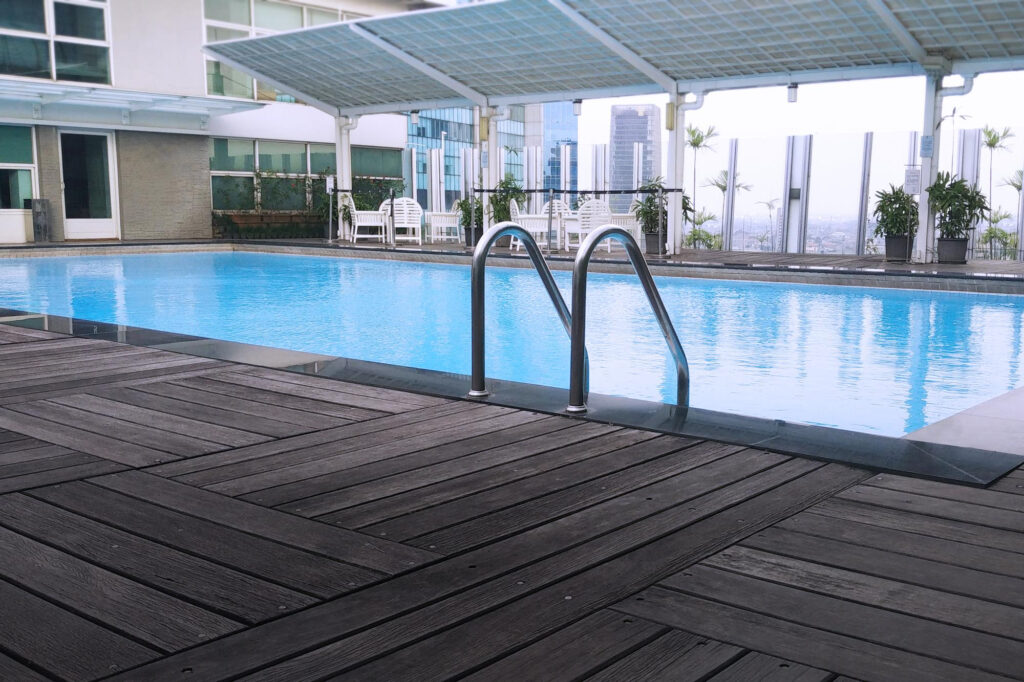10. Preventing Algae Growth in Humid vs. Dry Climates
Explore effective strategies for preventing algae growth in humid and dry climates, ensuring your pool stays crystal clear year-round.
Algae is a persistent problem for pool owners, but its prevalence and management can vary significantly between humid and dry climates. Understanding how climate influences algae growth is essential for maintaining clean, safe, and inviting swimming pools. In this blog post, we’ll explore practical methods for preventing algae in both humid and dry environments, diving into the science behind algae growth, the unique challenges each climate presents, and tailored strategies to keep your pool crystal clear. Whether you own a residential pool or manage several properties as part of a pool service business, this guide will provide valuable insights and actionable tips.
Understanding Algae Growth: A Brief Overview
– Algae are simple, plant-like organisms that can thrive in various environments, particularly in water. They require sunlight, warmth, and nutrients to grow, which makes pools an ideal breeding ground.- There are several types of algae, including green algae, yellow/mustard algae, and black algae. Each type has unique characteristics and requires different treatment methods.- Factors influencing algae growth include water chemistry, temperature, and the availability of nutrients like phosphates and nitrates.In humid climates, the high levels of moisture in the air can create favorable conditions for algae growth. Conversely, dry climates can lead to rapid evaporation and concentrated chemicals, which may also encourage certain types of algae. Understanding these dynamics is crucial for effective pool management.
Algae Challenges in Humid Climates
– High Humidity and Temperature: The combination of high humidity and warm temperatures provides an ideal environment for algae proliferation. Pools in these areas often require frequent monitoring and maintenance.- Nutrient Runoff: Rainfall can wash nutrients from the surrounding environment into the pool, promoting algae growth. This runoff often contains fertilizers and other organic matter that act as food for algae.- Chlorine Demand: In humid conditions, chlorine can dissipate quickly, making it imperative to maintain appropriate levels to combat algae growth.To combat these challenges, consider implementing the following strategies:1. Regular Water Testing: Test water chemistry at least once a week to ensure pH and chlorine levels are optimal (pH should be between 7.2 and 7.6, and free chlorine should be 1-3 ppm).2. Use Algaecides: Consider using algaecides as a preventive measure. These chemicals inhibit algae growth and can be particularly effective in humid areas.3. Improve Circulation: Ensure your pool’s filtration and circulation systems work efficiently. Proper water movement can help prevent algae from settling.4. Debris Removal: Regularly remove leaves and other organic materials from the pool, as they can contribute to nutrient buildup and encourage algae growth.By proactively addressing these issues, pool owners in humid climates can significantly reduce the likelihood of algae outbreaks.
Algae Challenges in Dry Climates
– Evaporation Rates: Pools in dry climates experience higher evaporation rates, which can lead to fluctuating chemical balances. This inconsistency can create conditions favorable for algae.- Concentration of Chemicals: As water evaporates, the concentration of pool chemicals increases, which can lead to imbalances that promote algae growth.- Dust and Debris: Dry, windy conditions can introduce additional debris into the pool, potentially increasing the nutrient load.To mitigate these challenges, consider the following strategies:1. Regular Backwashing: Frequently backwash your filter to ensure it operates efficiently, especially after windstorms or dust events.2. Maintain Water Levels: Regularly check and refill your pool to counteract evaporation. Keeping water levels consistent can help maintain chemical balance.3. Use Pool Covers: When not in use, cover your pool to reduce evaporation and limit debris entry. This simple step can help maintain water quality.4. Adjust Chemical Additions: Since chemicals can become concentrated, make incremental adjustments to your chemical treatments to avoid overwhelming the system.Implementing these practices will help pool owners in dry climates manage algae and maintain a clean swimming environment.
Optimal Water Chemistry for Algae Prevention
Maintaining balanced water chemistry is paramount in preventing algae growth, regardless of climate. Here are some key parameters to monitor:- pH Levels: Keeping pH levels between 7.2 and 7.6 ensures that chlorine works effectively to kill algae.- Chlorine Levels: Aim for a free chlorine level of 1-3 ppm. In humid climates, you may need to adjust this more frequently.- Total Alkalinity: Maintain total alkalinity between 80-120 ppm to help stabilize pH levels.- Calcium Hardness: For plaster pools, ensure calcium hardness is between 200-400 ppm to prevent surface etching and scaling.Regularly testing your pool water with a reliable testing kit and adjusting treatments as necessary can create an unwelcoming environment for algae.
Practical Tips for Seasonal Maintenance
Seasons play a significant role in algae management. The following tips can help you prepare your pool maintenance routine for changing weather conditions:1. Spring Cleaning: Before the swimming season begins, perform a thorough cleaning of your pool. This includes scrubbing walls, vacuuming the floor, and checking all equipment for optimal function.2. Summer Readiness: As temperatures rise, increase the frequency of water testing and adjust chemical levels accordingly. Consider using a floating chlorinator for consistent chlorine distribution.3. Fall Preparations: As temperatures begin to drop, continue monitoring water chemistry to prevent algae growth during cooler months. Plan for your pool’s closing procedures, including winterizing.4. Winter Care: In areas prone to freezing, ensure your pool is winterized correctly to prevent damage. For milder climates, maintain water chemistry and circulation to avoid algae buildup.By following these seasonal strategies, you can minimize the risk of algae growth throughout the year.
The Role of Filtration and Circulation Systems
Efficient filtration and circulation systems are critical components in preventing algae growth. Here’s why:- Effective Filtration: Regularly clean and maintain your pool filter to ensure optimal performance. A clogged or inefficient filter can lead to stagnant water, which is an attractive breeding ground for algae.- Proper Water Circulation: Maintaining proper circulation helps distribute chemicals evenly and prevents dead spots where algae can thrive. Aim for at least 8 hours of circulation per day, adjusting based on pool usage and weather conditions.Investing in high-quality filtration systems, such as sand or cartridge filters, can provide long-term benefits in preventing algae and maintaining water clarity.
Leveraging Professional Pool Services
For those who prefer to leave maintenance to the experts, consider investing in professional pool services. Companies like Superior Pool Routes offer extensive training and support to ensure pool maintenance is handled efficiently and effectively. Here’s how professional services can benefit you:1. Expertise: Trained professionals understand the intricacies of pool maintenance and can quickly identify potential issues, including algae problems.2. Consistent Maintenance: Regular visits ensure that water chemistry is balanced, debris is removed, and equipment is operating properly.3. Speedy Response: In the event of an algae outbreak, professionals can implement corrective measures swiftly to restore your pool to optimal conditions.If you’re interested in exploring options for professional assistance, check out the
pool routes for sale to find opportunities in your area.
Conclusion
Preventing algae growth in pools is a critical aspect of pool maintenance, particularly in varying climates. By understanding the unique challenges posed by humid and dry conditions, pool owners can implement tailored strategies to keep their pools clean and inviting. Regular maintenance, efficient water chemistry management, and professional support can make all the difference in ensuring a pleasant swimming experience. Whether you’re a homeowner or a pool service professional managing multiple accounts, staying proactive and informed will equip you to battle algae effectively. Remember, a clean pool not only enhances aesthetics but also promotes health and safety for all swimmers. For more information on
how to maintain your pool, feel free to reach out to
Superior Pool Routes and explore their training and support options today.



